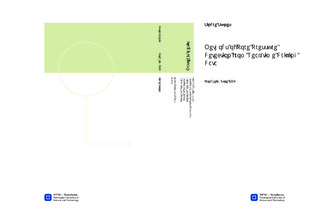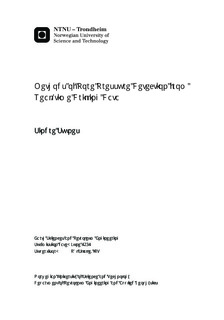| dc.contributor.advisor | Skalle, Pål | nb_NO |
| dc.contributor.author | Stunes, Sindre | nb_NO |
| dc.date.accessioned | 2014-12-19T12:16:25Z | |
| dc.date.available | 2014-12-19T12:16:25Z | |
| dc.date.created | 2012-11-08 | nb_NO |
| dc.date.issued | 2012 | nb_NO |
| dc.identifier | 566357 | nb_NO |
| dc.identifier | ntnudaim:7546 | nb_NO |
| dc.identifier.uri | http://hdl.handle.net/11250/239811 | |
| dc.description.abstract | The knowledge of formation pore pressure, and how it changes throughout the length of a well, is crucial in terms of maintaining control of the wellbore. Failure to recognize deviations from the expected pressures can lead to problems and instabilities, which increases drilling costs. A worst case scenario may lead to loss of an entire well section. Thus maintaining a real-time knowledge of the formation pore pressure is beneficial regarding both the cost and the safety of a drilling operation.In this thesis multiple methods of pore pressure detection have been implemented in a Matlab program, which is used for testing with recorded real-time drilling data of a well, provided by IPT. The methods chosen were the Zamora and Eaton methods, both based on utilization of the dc-exponent, and the Bourgoyne-Young drilling model. The program has calculated pore pressure gradients based on each of these methods. In turn these results have been compared with the pore pressure presented in a final well report provided alongside the drilling data. This forms a basis for evaluation of each methods accuracy and applicability with use of this kind of drilling data. The results show that all three methods are able to produce a pore pressure gradient which is partly in compliance with the values provided in the final well report. However, the accuracy of the calculated results is not sufficient to be used to detect pore pressure with the desired precision. This may in part be caused by a lack of gamma ray data, which would have provided a more reliable selection of data. The addition of gamma ray as an input parameter should be of priority in any future developments. The most accurate result was calculated using the Bourgoyne-Young drilling model. | nb_NO |
| dc.language | eng | nb_NO |
| dc.publisher | Institutt for petroleumsteknologi og anvendt geofysikk | nb_NO |
| dc.subject | ntnudaim:7546 | no_NO |
| dc.subject | MTGEOP Geofag og petroleumsteknologi | no_NO |
| dc.subject | Boreteknologi | no_NO |
| dc.title | Methods of Pore Pressure Detection from Real-time Drilling Data | nb_NO |
| dc.type | Master thesis | nb_NO |
| dc.source.pagenumber | 108 | nb_NO |
| dc.contributor.department | Norges teknisk-naturvitenskapelige universitet, Fakultet for ingeniørvitenskap og teknologi, Institutt for petroleumsteknologi og anvendt geofysikk | nb_NO |

